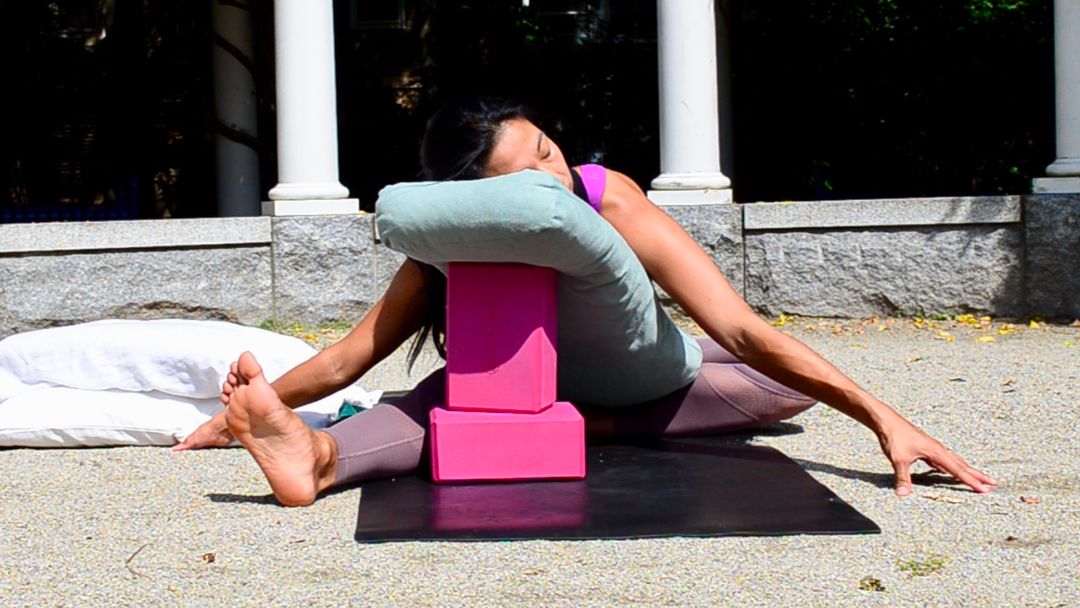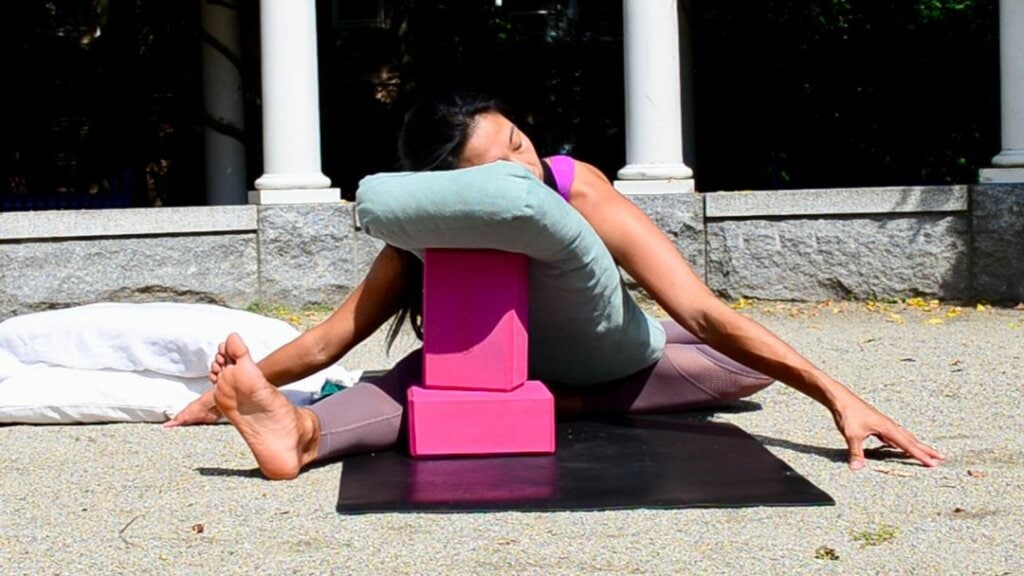By definition, mood is a temporary state of mind. However, in essence it is so much more. Its importance and possibility for introspection is undermined by the guise of its fleeting and ever-changing nature. In truth, it is exactly that perpetual dance of energy that makes it such a valuable tool for self-discovery.
The yoga practice of svadhyaya (self-study) invites reprieve from the incessant fluctuations. It nurtures a space to witness the present. The theory is straightforward: study yourself. Yet, it would be a disservice to the rigor and dedication required to know the self to translate the simplicity of svadhyaya as easy. It is no lighthearted folly to spend time with the self. It is a lifelong relationship with each present moment. You will expand your personal consciousness and change the way you relate to the world, operatively changing the world around you.
As a platform for svadhyaya, restorative yoga provides a safe space with its unassuming and tender nature. Striking balance through the practice of sthira (steadiness) and sukha (gentleness). Bolsters, blankets, and pillows longingly invite you to be soft and gentle, while the prolonged pauses (often 3-7 minutes in length) in each form require steadiness and fortitude of mind and body.
Of the many restorative poses that offer you space to grow, these five target different regions in the body and are associated with different effects. It is less important to practice all five every day. Rather hold a pose that feels right for you and focus on the melting of sthira and sukha in your breath and body.
1. Matsyasana (Fish Pose) variation OR Supta Virasana (Reclining Hero Pose).
Practice if you are feeling: anxious, angry, or reserved
Practice if you are seeking to increase: vulnerability, openness, and love
Area of focus: heart
Mantras: I radiate light.
Notes: The base of this form is the T-shape of the blocks to support a heart-bench. If you have happy and healthy knees that would like to take a bound variation of Virasana, wrap a strap tightly around the mid-thighs to internally rotate the legs and release the outer thigh. Supta Virasana constricts and channels energy upward toward the heart to foster a deeper opening. Be mindful to not stay too long when you are starting out with this pose. Be respectful to your knees and body. If you would prefer to stay for prolonged periods of time (3+ minutes), practice Matsyasana with as many bolsters and pillows under the knees as it takes to feel the lower back lengthen and relax.
2. Uttana Shishosana (Extended Puppy Pose) – Variation
Practice if you are feeling: stuck, stubborn, or closed-minded
Practice if you are seeking to increase: awareness, perspective, and communication
Area of focus: armpits and shoulders
Mantras: I bow down to the light within.
Notes: The armpits are a highway of blood vessels, lymph nodes, and more. Rarely given much attention, the armpits can get congested and hold tension.
3. Janu Sirsasana (Head-to-Knee Pose)
Practice if you are feeling: exhausted or burnt-out.
Practice if you are seeking to increase: to let go and calm your nervous system.
Area of focus: groin, hamstrings, and spine.
Mantra: The earth grounds me.
Notes: Allow the spine to round and initiate the bend by hinging at the hips. Arms can be wide as pictured or hugging the blocks and bolsters.
4. Setu Bandha Sarvangasana (Bridge Pose) – Variation
Practice if you are feeling: wound up or closed off
Practice if you are seeking to increase: blood flow, movement, and energy
Area of focus: hips
Mantra: I am open to new experiences.
Notes: In this variation a block was used because of its firm and focused support on the sacrum and hips. If that feels too much, take a firm pillow or bolster under the hips to create a gentler extension of the front body. Hugging in one knee at a time can intensive the hip extension on the extended side.
5. Supported Prone Hip Opener
Practice if you are feeling: strong emotions from the past or overwhelmed
Practice if you are seeking to increase: tolerance, perspective, and space
Area of focus: hips, spine, and lower back
Mantra: I am safe and strong.
Notes: This is a fantastic way to sleep; however, in this practice it is important to stay awake and attuned to the body. The knee placement impacts what area of the spine is addressed. When the knee is higher toward the head, the upper spine is activated. When the knee is lower toward the elongated leg, the lower back is activated. Play around with placement.
Remember: for every action, there is an equal and opposite reaction. Practice leaves an imprint, and in slower practices that impression shows up much later. It is important to remember that you can go too far in restorative practices and the impact will not show up for a long time. This practice is not a cure all. This is a practice of self-discovery. Enjoy exploring your body, listening to its secrets, and learning from its stories.








